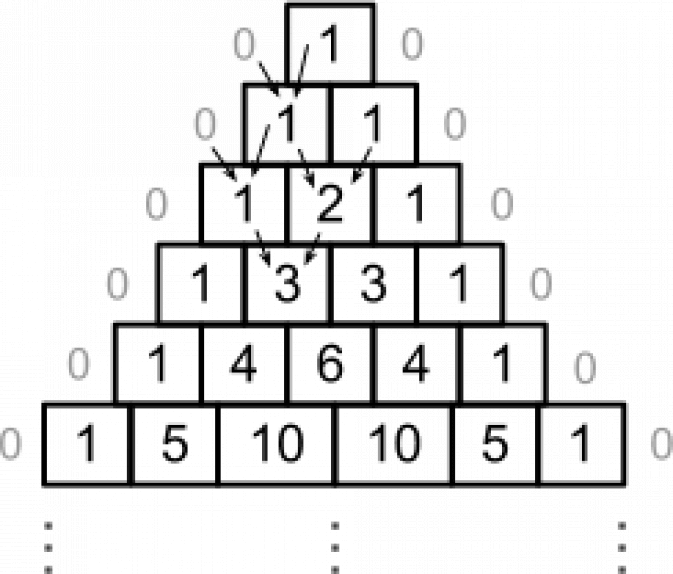What Is Pascal’s Triangle? (Part 1)
Learn how to draw Pascal’s triangle and find out what it has to do with the probability of tossing coins.
At the end of the last episode on how to calculate probabilities, I assigned you a little project about flipping 1, 2, 3, and finally 4 coins at once. Your first goal was to use a probability tree—or any other method you like—to figure out how many possible outcomes there are in each case. And your second goal was to figure out how many of these outcomes will give you 0, 1, 2, 3, or 4 heads.
Why would you want to do that? I know this might sound kind of strange, but it’s because the answer you get is sort of surprising…and it’s very cool. Plus, it’s related to a famous and fascinating pattern you may have heard of called Pascal’s triangle. What exactly is that? And where does it come from? Stay tuned, because that’s precisely what we’re talking about today.
Sponsor: This podcast is brought to you by Betterment.com. Betterment offers users an easy way to invest. No prior investing experience is required. Users choose how to allocate their money between two pre-set baskets—a stock basket and a bond basket. Signing up takes less than 5 minutes and money can be added or withdrawn at any time without a fee. Sign up at betterment mathdude and receive a $25 account bonus for initial deposits of $250 or more.
Tossing 1 and 2 Coins
The first thing we need to do on our quest to discover Pascal’s triangle is figure out how many possible outcomes there are when tossing 1 and 2 coins at the same time. Of course, when we toss a single coin there are exactly 2 possible outcomes—heads or tails—which we’ll abbreviate as “H” or “T.” How many of these outcomes give 0 heads? Well, 1 of them. And there’s also 1 outcome that gives 1 head.
Thinking about 1 coin is almost too easy, so let’s move on to 2 coins. As we saw when we first learned about probability and probability trees, there are 4 possible outcomes when tossing 2 coins. That makes perfect sense since each of the 2 possible outcomes for the first coin—H or T—has 2 possible outcomes for the second coin—again, H or T. So there must be twice as many outcomes for 2 coins as there are for 1 coin. And there are! HH, HT, TH, or TT.

Tossing 3 and 4 Coins
Let’s try tossing 3 coins at once. There’s a bit more to keep track of here, so it’s helpful to draw a probability tree. The tree for 3 coins looks exactly like the tree for 2 coins, with the addition of another set of branches on the right side representing the possible outcomes for the third coin. If you draw this probability tree, you’ll find that there are a total of 8 possible outcomes.
That number of outcomes makes sense since, again, there must be twice as many possible outcomes for 3 coins as there are for 2 coins. How many of these outcomes have 0, 1, or 2 heads? If you add them all up, you’ll find 1 outcome with 0 heads (TTT), 3 outcomes with 1 head (HTT, THT, or TTH), 3 outcomes with 2 heads (HHT, HTH, and THH), and finally 1 outcome with 3 heads (HHH).
Four coins is even more complicated since there are now 16 possible outcomes. I’ll spare you the pleasure of having me describe them all right now, but if you draw up the tree diagram and add up the possibilities, you’ll find 1 outcome that gives 0 heads, 4 outcomes that give 1 head, 6 that give 2 heads, back to 4 that give 3 heads, and again 1 outcome that gives 4 heads.
How to Calculate Probabilities
So, what can we do with all of this? Well, one thing we can do is calculate probabilities. For example, we can now answer fairly complicated questions such as: What’s the probability of tossing exactly 2 heads when you flip 3 coins? Since we know that there are 8 total possible outcomes with 3 coins, and since there are 3 outcomes that have 2 heads, we know that the probability of tossing exactly 2 heads is 3/8.
What about the probability of tossing 2 or more heads? Well, all we have to do to find the answer is add the probability of tossing exactly 2 heads (which we’ve found to be 3/8) to the probability of tossing exactly 3 heads (which is 1/8) to find a total combined probability of 3/8 + 1/8 = 4/8 = 1/2. Which means there’s a 50/50 chance that 2 or more of the 3 coins we’re tossing will land heads.
What Is Pascal’s Triangle?
At this point, it’s pretty easy to imagine that things are going to get very messy when we move beyond 4 coins. For example, what if we want to figure out something like the probability of 3 or more heads when tossing 6 coins? That probability tree for 6 coins is going to be a monster! But, thankfully, I have some good news: you don’t actually have to draw that complicated probability tree. Why? Because of something called Pascal’s triangle.
To create Pascal’s triangle, start by writing the number 1 on a piece of paper—this is the first row of the triangle. Next, assume that this 1—and all 1s along the edges of subsequent rows of the triangle—are surrounded by 0s. Each row of Pascal’s triangle is built by adding together pairs of numbers from the preceding row. So the next row of Pascal’s triangle consists of a pair of 1s obtained from 0+1 and 1+0; the following row starts with 0+1=1, then 1+1=2, and finally 1+0=1. Following the same pattern, the next row consists of the numbers 1, 3, 3, 1; the row after that is 1, 4, 6, 4, 1; and on and on.
Pascal’s Triangle and Probabilities
Do these numbers look familiar? They should because the numbers in each row of Pascal’s triangle are exactly the same as the number of possible outcomes with a given number of heads for our multiple coin tosses! For example, the numbers in the fourth row of Pascal’s triangle—1, 3, 3, 1—are precisely the number of outcomes when flipping 3 coins that have 0, 1, 2, and 3 heads. The next row of the triangle is the number of outcomes for 4 coins, and so on. Which means that we no longer have to bother drawing complicated probability trees—all we have to do is draw Pascal’s triangle!
Wrap Up
But calculating probabilities with ease isn’t the only thing amazing about Pascal’s triangle. In fact, it’s full of amazing patterns and uses. So be sure to check back next time to learn all about them.
In the meantime, remember to become a fan of the Math Dude on Facebook where you’ll find lots of great math posted throughout the week. If you’re on Twitter, please follow me there, too. Finally, please send your math questions my way via Facebook, Twitter, or email at mathdude@quickanddirtytips.com.
Until next time, this is Jason Marshall with The Math Dude’s Quick and Dirty Tips to Make Math Easier. Thanks for reading, math fans!
You May Also Like…










